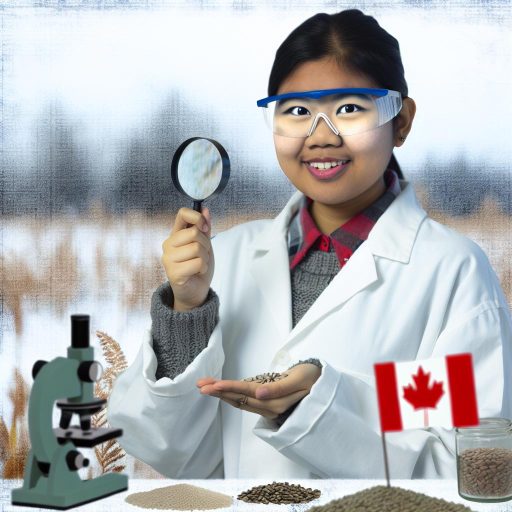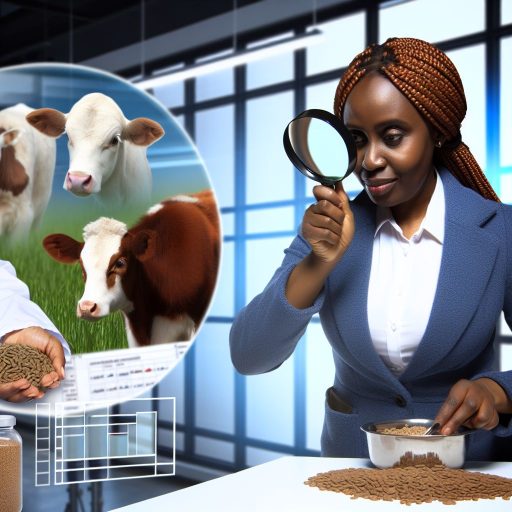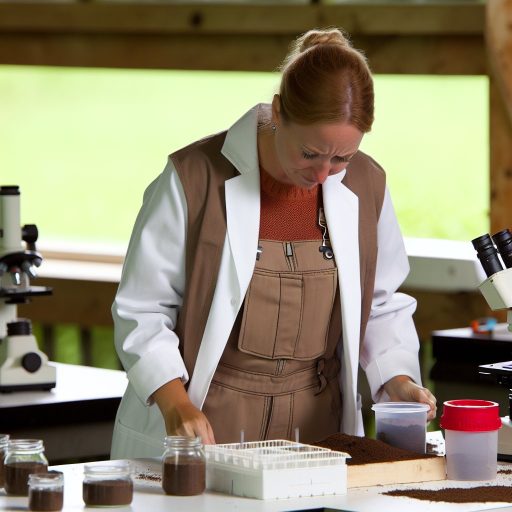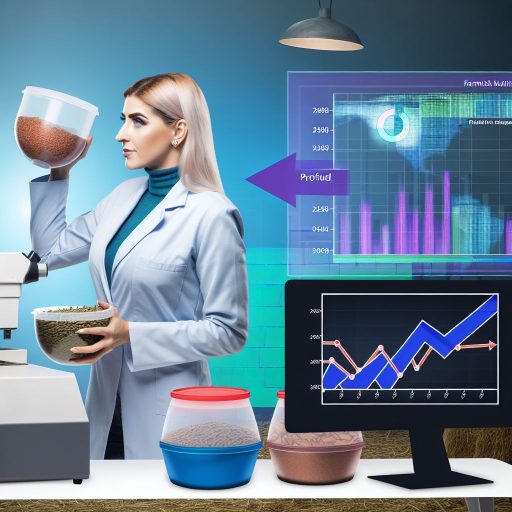Understanding Seed Germination
Definition and Importance
Seed germination marks the beginning of a plant’s life cycle.
It is the process where a seed develops into a new plant.
This transformation is essential for plant reproduction.
Germination is vital for agriculture and ecosystem balance.
It enables the growth of crops and other vegetation.
Moreover, seeds play a crucial role in maintaining biodiversity.
Successful germination leads to healthy plants and yields.
Factors Influencing Germination
Several factors influence the germination process.
Water availability is critical for seed activation.
Oxygen is also essential for respiration during germination.
Temperature affects the metabolic processes within seeds.
Light conditions can promote or inhibit germination.
Finally, seed dormancy mechanisms may delay germination.
Germination Process Overview
The germination process occurs in distinct stages.
Firstly, the seed absorbs water, swelling and softening the seed coat.
This process activates enzymes necessary for growth.
Next, the embryo begins to grow and break through the seed coat.
The sprout emerges and develops into a seedling.
Finally, the seedling establishes roots and leaves for photosynthesis.
Significance for Farmers and Gardeners
Understanding germination helps farmers improve crop yields.
Gardeners can select seeds with higher germination rates.
Effective planting can lead to healthier and more robust plants.
Additionally, timing the planting season aids in better results.
Informed decisions enhance overall agricultural productivity.
The Germination Process: Stages and Requirements
Overview of Germination
Germination is an essential process for seed development.
Unlock Your Career Potential
Visualize a clear path to success with our tailored Career Consulting service. Personalized insights in just 1-3 days.
Get StartedIt involves the transformation of a dormant seed into a new plant.
This process requires specific environmental conditions.
Stages of Germination
The germination process consists of several stages.
These stages include imbibition, activation, and emergence.
Imbibition
Imbibition is the first stage of germination.
During this stage, seeds absorb water.
This absorption causes the seed to swell and soften.
Consequently, metabolic processes begin to activate.
Activation
The activation stage follows imbibition.
During this stage, enzymatic activity increases.
Seeds begin to utilize stored nutrients for growth.
This activity prepares the seed for emerging as a plant.
Emergence
Emergence is the final stage of germination.
In this stage, the seedling breaks through the soil’s surface.
The first shoots and roots develop during emergence.
Now, the seedling can begin photosynthesis and grow further.
Requirements for Germination
Germination requires specific conditions to be successful.
These conditions include moisture, temperature, oxygen, and light.
Moisture
Moisture is a crucial factor for seed germination.
Seeds must be adequately hydrated to activate metabolic processes.
Too much or too little moisture can inhibit germination.
Temperature
Temperature also plays a vital role in germination.
Each seed species has an optimal temperature range for germination.
Generally, warmer temperatures promote faster germination.
Oxygen
Oxygen availability is another essential requirement.
Seeds need oxygen for cellular respiration.
Inadequate oxygen levels can prevent healthy germination.
Light
Light influences germination, but its necessity varies.
Some seeds require light, while others germinate in darkness.
Understanding the light requirements is crucial for successful planting.
Factors Affecting Seed Germination
Temperature
Temperature plays a crucial role in seed germination.
Most seeds require a specific temperature range to sprout successfully.
Higher temperatures can accelerate germination, but too much heat can be harmful.
Conversely, cooler temperatures may delay the process.
Understanding the temperature preferences of different seeds is essential.
Moisture
Moisture is vital for seed germination.
Seeds absorb water to activate the metabolic processes needed for growth.
Too little moisture can lead to dormancy, while excessive water may cause rot.
Maintaining optimal moisture levels ensures effective germination.
Gardeners should monitor soil moisture regularly to achieve the best results.
Light
Light can significantly influence seed germination rates.
Some seeds require light to germinate, while others need darkness.
For light-sensitive seeds, covering them with soil can hinder growth.
Thus, it’s crucial to be aware of each seed’s light requirements.
Adjusting light exposure can enhance germination success for various species.
Find Out More: How Arborists Diagnose and Treat Tree Diseases
Types of Seeds: Understanding Dormancy and Germination Strategies
Seed Dormancy Defined
Seed dormancy is a survival mechanism for seeds.
This strategy helps seeds respond to adverse environmental conditions.
It prevents germination during inappropriate times.
As a result, seeds can wait for optimal conditions.
Types of Dormancy
There are several types of seed dormancy.
Physical dormancy occurs when seeds have hard outer coatings.
This coating prevents water absorption.
Another type is physiological dormancy.
This form is caused by internal chemical inhibitors.
Lastly, morphological dormancy results from undeveloped embryos.
Triggers for Germination
Seeds require specific conditions to germinate.
Water is a crucial factor in the germination process.
Additionally, temperature influences germination success.
Many seeds also depend on light or darkness.
These triggers break dormancy and encourage growth.
Germination Strategies
Seeds utilize various strategies to germinate effectively.
Some seeds germinate immediately after dispersal.
Others require a period of cold stratification first.
Heat treatments can also stimulate certain seeds.
For some species, fire is a natural cue for germination.
Viability Testing of Seeds
Knowing whether seeds are viable is essential for planting.
Several methods exist for viability testing.
The floating test assesses seed viability through buoyancy.
Additionally, the cut test examines seed embryos for life.
Lastly, germination tests can directly show seed health.
Learn More: Career Benefits of Pursuing Soil Science in Canada
Viability Testing: Purpose and Methods for Assessing Seed Health
Importance of Seed Viability Testing
Seed viability testing ensures the seeds can germinate successfully.
Farmers rely on healthy seeds for productive yields.
Moreover, sound seeds contribute to sustainable agriculture practices.
Knowing seed viability leads to better planning and resource management.
Common Methods of Viability Testing
Several methods exist for testing seed viability.
The most popular techniques include germination tests and tetrazolium tests.
Germination Testing
Germination testing involves placing seeds in ideal conditions.
This creates an environment that encourages sprouting.
Typically, growers check germination after a set period.
Standard conditions include warmth, moisture, and light.
Evaluate the number of seeds sprouted to assess viability.
Tetrazolium Testing
Tetrazolium testing uses a chemical dye to assess seed health.
This method identifies live and dead cells within the seeds.
It provides quick results compared to traditional testing.
However, it requires more expertise and equipment.
As a result, many prefer simple germination tests.
Factors Affecting Seed Viability
Various factors influence seed viability testing outcomes.
Temperature, moisture, and oxygen levels are crucial.
Additionally, seed age plays a significant role in viability.
Proper storage conditions also protect seed health over time.
Interpreting Viability Test Results
Interpreting results from viability tests requires careful consideration.
Look for germination percentages and overall health of seeds.
Higher percentages indicate better potential for successful crops.
Understanding these results aids in decision-making for planting.
Explore Further: Career Growth and Advancement for Canadian Soil Scientists
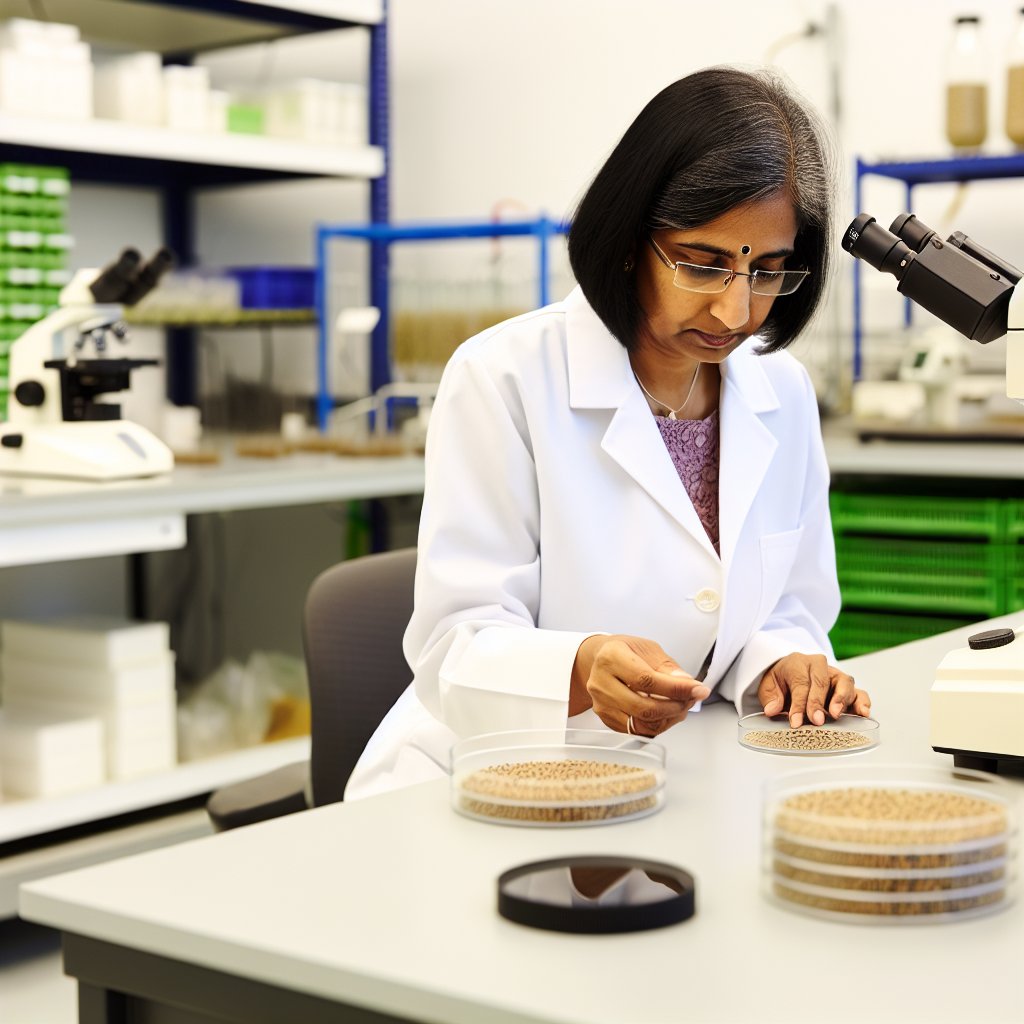
Common Viability Testing Methods
Tetrazolium Test
The Tetrazolium test assesses seed viability through color change.
This method utilizes a tetrazolium salt that indicates respiration.
Viable seeds will turn red or pink in color due to enzyme activity.
Firstly, seeds soak in a tetrazolium solution for several hours.
Next, a slicing technique may be used to aid dye penetration.
Finally, observers analyze the color intensity to determine viability.
It’s a rapid method offering results within a day.
However, it requires careful handling and precise timing.
Germination Test
The germination test is a traditional method for viability assessment.
It involves planting seeds in controlled conditions.
Growers monitor the percentage that germinate over a specific period.
This test typically takes several days to weeks to complete.
Additionally, it provides insights into the overall seed health.
Factors like temperature, moisture, and light are crucial during testing.
Moreover, accurate counts of germinated seeds enhance reliability.
Other Methods
Other methods also exist for determining seed viability.
- The Accelerated Aging Test simulates long-term storage effects.
- The Electrical Conductivity Test measures seed leachate conductance.
- X-ray imaging reveals seed development and internal damage.
Each method has unique advantages and limitations.
It’s essential to select the most appropriate method based on resources.
Additionally, considering the specific seed type is critical for accuracy.
You Might Also Like: How Seed Technologists Ensure Food Security in Canada
The Role of Seed Coating and Treatments in Germination Success
Introduction to Seed Coating
Seed coating involves covering seeds with a protective layer.
This layer can enhance germination rates and seed viability.
Furthermore, coatings can protect seeds from environmental stressors.
Benefits of Seed Coating
Coated seeds often exhibit improved moisture retention.
They can also gain protection from pests and diseases.
Additionally, seed coatings can enhance nutrient uptake after germination.
Types of Seed Coatings
There are various types of seed coatings available.
Common coatings include polymers, clays, and biological materials.
Each type serves unique functions tailored to specific plants.
For instance, polymer coatings often offer moisture control.
Seed Treatments and Their Importance
Seed treatments involve applying substances to the seed surface.
These substances can include fungicides, insecticides, and growth stimulants.
They play a vital role in promoting healthy seedling development.
Enhancing Germination with Treatments
Treatments can significantly boost seed germination rates.
Furthermore, they can prepare seeds for unfavorable conditions.
For example, synergistic treatments help seeds overcome dormancy.
Factors Affecting Seed Coating and Treatment Effectiveness
Environmental conditions significantly influence seed performance.
Soil temperature and moisture levels directly impact germination success.
Moreover, the compatibility of treatments with specific seed types matters.
Maximizing Crop Yields with Seed Innovations
Understanding the role of seed coating and treatments is essential.
It helps growers maximize crop yields and improve plant health.
Ultimately, investing in quality seed treatments pays off significantly.
Best Practices for Conducting Viability Tests and Interpreting Results
Choosing the Right Seeds
Select high-quality seeds for testing.
Avoid using old or damaged seeds.
Use seeds from reputable suppliers.
This enhances the accuracy of your results.
Preparing for the Test
Gather all necessary materials before starting.
These include a petri dish, filter paper, and water.
Ensure you label each seed sample clearly.
This prevents confusion during analysis.
Conducting the Viability Test
Place seeds on moistened filter paper in a petri dish.
Ensure you provide adequate spacing between seeds.
Keep the dish in a warm, dark place.
This simulates natural germination conditions.
Observe the seeds for several days.
Count the number of seeds that germinate.
Interpreting the Results
Calculate the germination percentage.
Use the formula: (Number of Germinated Seeds / Total Seeds) x 100.
Analyze the results to assess seed quality.
For example, a higher percentage indicates better viability.
Document your findings for future reference.
Common Pitfalls to Avoid
Do not rush through the testing process.
Rushing can lead to inaccurate results.
Avoid using contaminated materials during testing.
This may compromise seed viability assessments.
Stay organized throughout the process.
This facilitates better data tracking and analysis.

